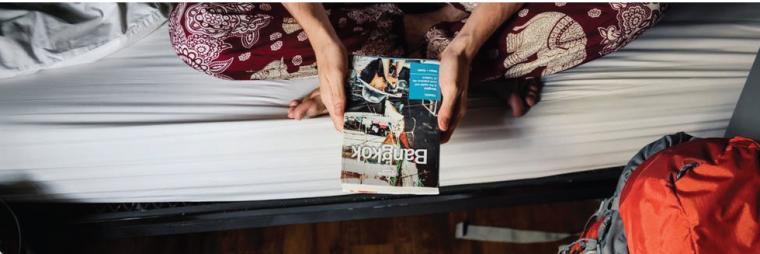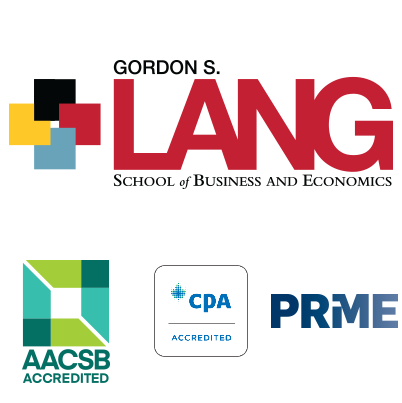
Need to know:
Brochures remain an important element in the marketing of tourism destinations across the world.
Researchers at U of G are using eye-tracking glasses to understand consumer behaviour and improve travel brochures.
Images are the most important element of a travel brochure to tourists, while ads make the brochure seem "less trustworthy."
Even with the rapid growth of website and social media advertising, brochures remain one of the most important and widely used marketing tools in the tourism industry. While there are best practices that help marketers generate brochures, the science behind enhancing their effectiveness has largely been left to survey-based research. Now, new technology in the form of eye-tracking glasses is shedding a much-needed light on the science behind generating compelling brochures for prospective tourists.
In a recent research project, School of Hospitality, Food and Tourism Management [1] professor Marion Joppe [2], PhD Candidate Sandy Shen [3] and PhD student Michael Lever [4] used this technology to evaluate the Ottawa Visitor Guide for 2017/2018. They asked participants to wear the eye-tracking glasses as they reviewed the guide with the intent to plan a two-day trip to the city. The resulting data is generated through the glasses using a variety of meaningful measurement tools including heat maps that illustrate how participants’ eyes travel over the page and gaze plots which depict the duration they focus on certain parts of the guide.

“We have forever relied on surveys to try to understand how people respond to advertising,” says Joppe. “Eye tracking, which is relatively new technology at least in a tourism context, tracks where you are looking and how much time you are spending there. So when you think in terms of a page there may be text, advertising, pictures. What is it that attracts your attention?”
Answering this question is extremely helpful to destination marketers, but Joppe emphasizes that it’s important to adopt a dual focus when conducting this research. She and the students complete follow-up interviews with participants to ask why they focused on certain parts of the brochure to complement the data that indicates what drew their attention.
Findings from the Ottawa Visitor Guide project reinforce the importance of images in brochures, as well as the need to create layouts that can be skimmed by tourists. Advertisements were deemed “less useful” with some participants indicating that they found this type of content less trustworthy. Overall, the research supported aligning brochure content with popular online information from sources such as TripAdvisor - top 10 lists, for example. It also recommended revising maps to connect locations of popular tourist spots with page numbers featuring additional information and descriptions.
Transcript [6]
“Understanding how people see things is important,” adds Joppe. “There are many possible applications of this research that could result in implications for way finding, space use, and more.”
Specifically, Joppe mentions using eye tracking to review safety and security instructions. This could lead to developing a better understanding of how people who speak different languages understand highway signs. For example, does everyone recognize what EDR means and how to react? There are also opportunities to optimize signage placement so signs are easier to see, as well as create more engaging content in places like museums. Using the glasses to identify what types of artifacts and layouts generate the greatest focus may help museums increase their visitor numbers.
“We like to do research that has a practical application,” says Joppe. “When you really understand what intrigues people, what captures their attention, then you can actually develop much better brochures.”



